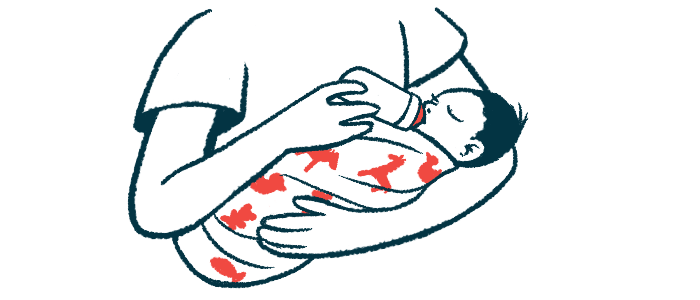DySMA on swallowing in healthy children offers SMA comparison
Data show not all healthy children acquired full feeding skills by 2 years of age
Written by |

Not all healthy children acquire full feeding skills by 2 years, according to a study that applied an instrument called DySMA — which assesses swallowing in infants and children with spinal muscular atrophy (SMA) who are undergoing treatment — to healthy children in a study to enable more accurate comparisons.
The data showed 1 in 5 healthy children between 18 and 24 months frequently choked and 1 in 4 frequently coughed while eating.
“By analyzing the normative sample, this tool makes it possible to represent a deviation from the norm for children with SMA,” the study’s researchers wrote. The study, “Feeding development in healthy infants: A comparative framework for children with Spinal Muscular Atrophy – The DySMAnorm study,” was published in the International Journal of Pediatric Otorhinolaryngology.
SMA is caused by the degeneration of nerve cells involved in muscle control, which leads to progressive muscle wasting and weakness that mainly affects motor function. SMA patients often have problems swallowing foods and/or liquids, a condition called dysphagia, due to weakness in the muscles that support the face, mouth, and neck.
A natural history study found profound deficits in swallowing among untreated infants with SMA type 1, a severe form of the disease, but improvements have been seen since the advent of disease-modifying therapies (DMTs).
Comparing feeding in healthy, SMA children
A research team in Germany developed DySMA, or Dysphagia in Spinal Muscular Atrophy, to assess swallowing abnormalities and feeding development in children with SMA, from birth to age 2 and the DySMAstudy (DRKS00029541) was launched to measure the impact of DMTs on swallowing in infants and young children with SMA. A second arm of the DySMAstudy, dubbed DySMAnorm, was conducted to capture DySMA data among healthy children.
“This would allow for a comparison between healthy children and children with SMA and thus reveal developmental deviations in children with SMA,” the researchers wrote.
DySMAnorm recruited 92 infants and toddlers, ages birth to 2 years, who were all healthy and born after the 37th week of pregnancy.
Conducted by two speech-language pathologists, DySMA consisted of two parts: a patient history on the type of nutrition and swallowing provided by the caregiver and an oral and breathing examination. The total score ranged from 0 to 35, with higher scores indicating better feeding development.
Data showed the total DySMA score increased with age and ranged from 21 to 35, with two children achieving a maximum score by 16 months. Scores for the patient history part also increased across all the age groups, ranging from 16 to a maximum of 28. Scores from the examinations remained consistent across all the age groups, with a maximum score of 7 already achieved in the youngest age group (birth to 2 months).
Increases in DySMA history scores were primarily driven by two categories: the type of nutrition, and jaw strength and stability. No age-related development was observed in all other categories, including choking, eating behavior, fatigue, digestive problems, and secretion management (clearing mucus from the airways). In these categories, the maximum score was already attained in the youngest age group and remained stable.
Acquiring feeding skills
Not all the children acquired all feeding skills by 2 years. These included eating family food (60%), drinking from an open cup (87%), and drinking through a straw (80%). Still, all the older children mastered skills such as chewing and biting off food, according to their parents.
Initial reports of frequent coughing or choking during meals were reported and these symptoms decreased as the children aged. Still, in the oldest group of 18-24 months, 1 out of 5 (20%) parents reported their child frequently choked, while about 1 in 4 (27%) reported frequent coughing during meals.
Picky eating, or only consuming certain foods, also increased with age. Conversely, vomiting, fatigue, and secretion management decreased with age or were reported as absent. Several healthy children were found to breathe through their mouth or hold their mouth open, and a “high and narrow palate” was observed twice.
The researchers also compared DySMA scores from each speech-language pathologist and mostly found agreement between them, but noted some difference on the evaluation about mouth breathing.
“The DySMA can be conducted reliably and reflects the development of feeding and oral motor skills,” the authors wrote. “The normative data obtained in this study provide initial reference values that can contribute to the improvement of diagnostic processes for children with SMA.”







